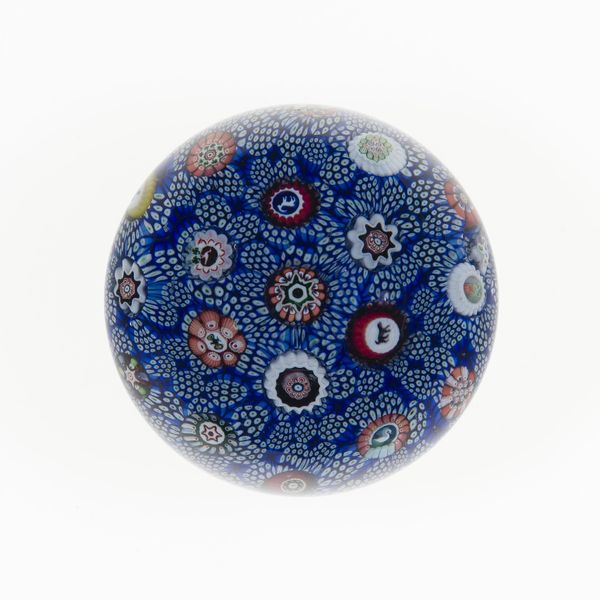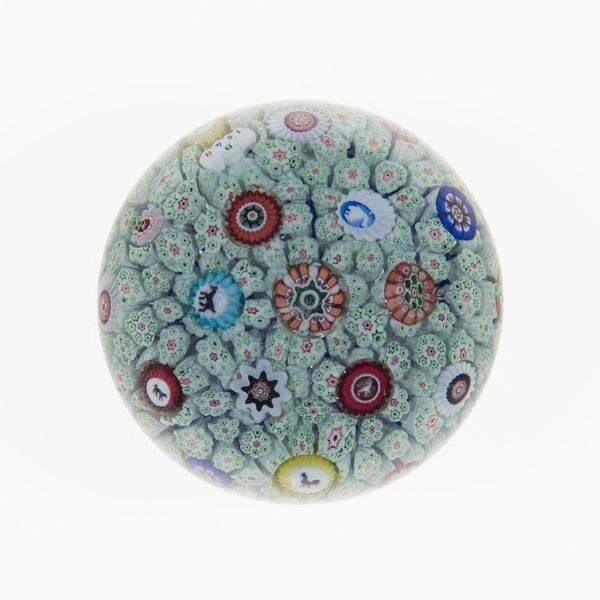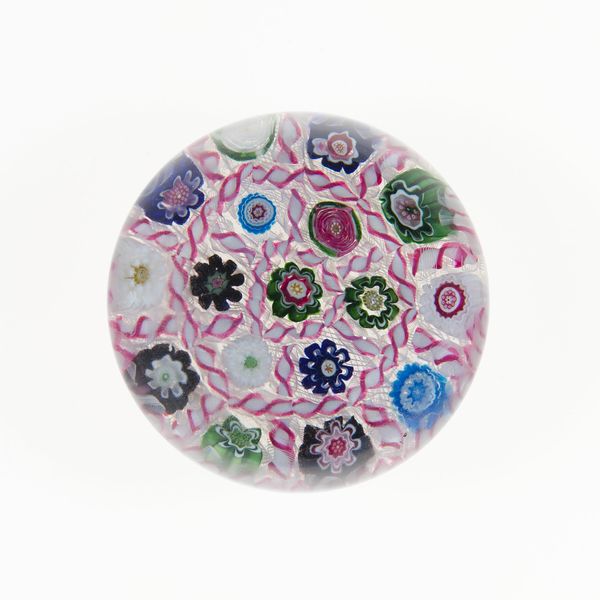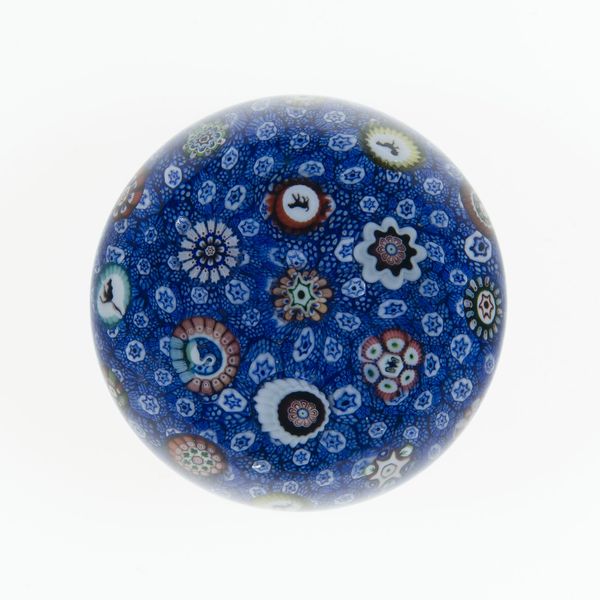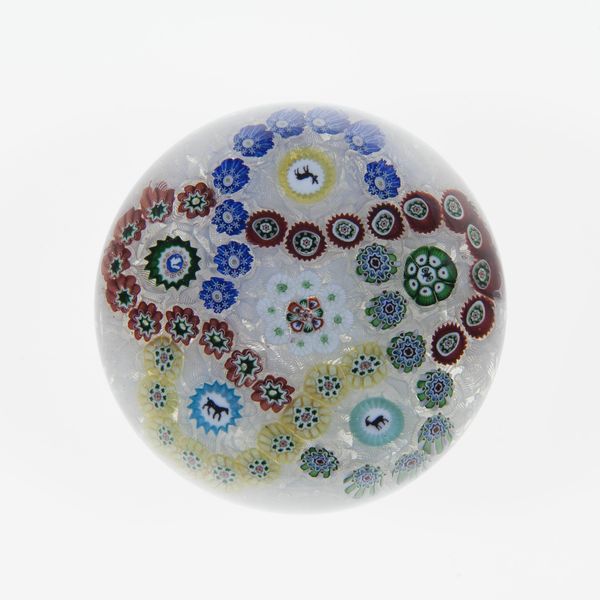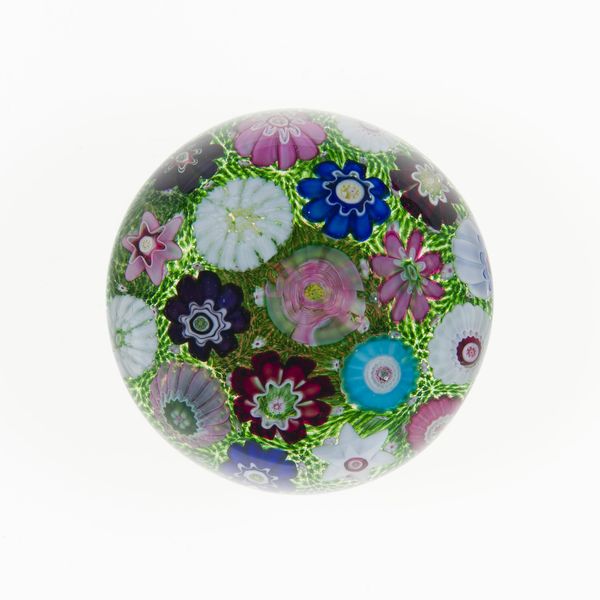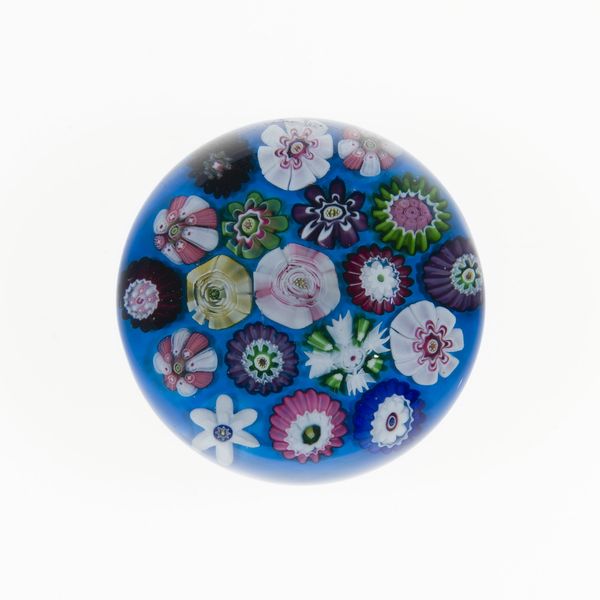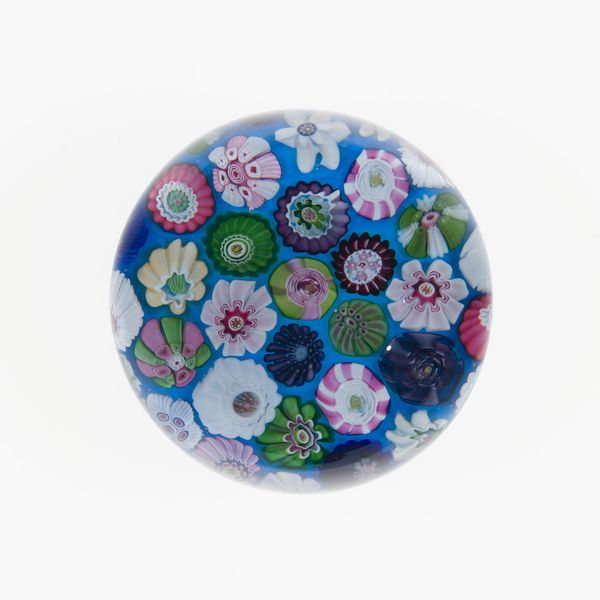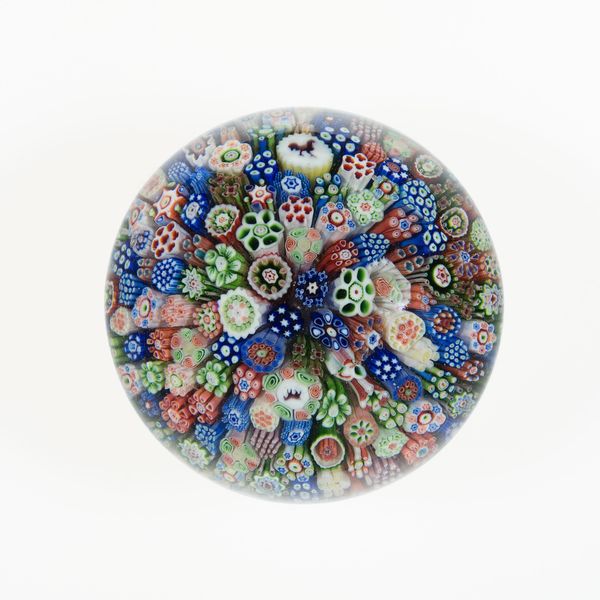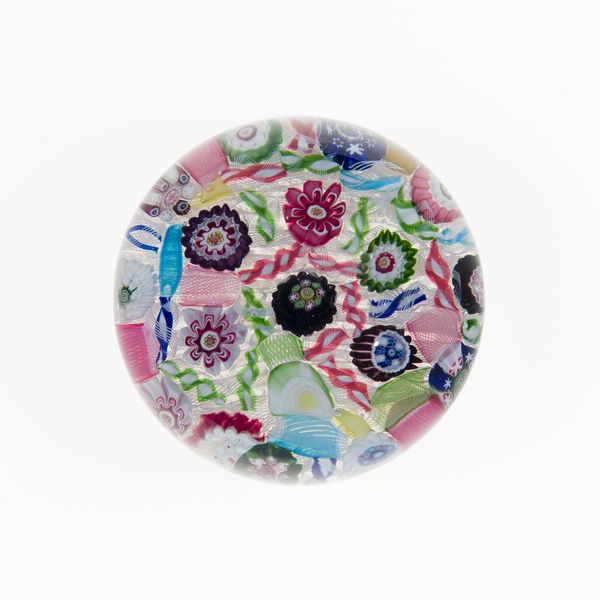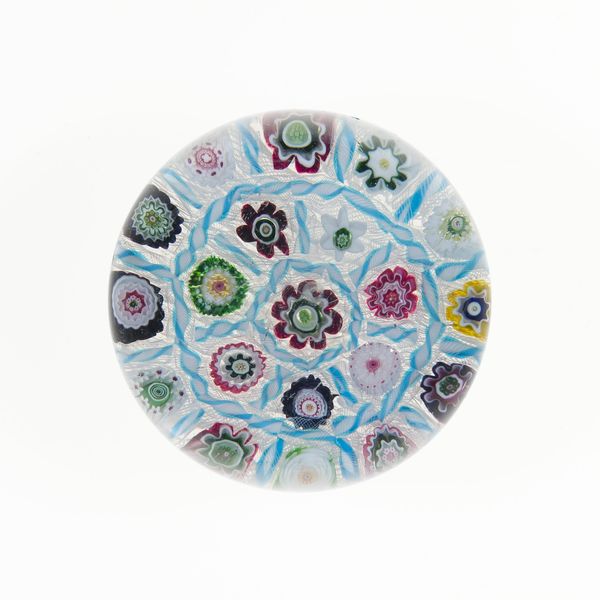
glass
#
16_19th-century
#
glass
#
orientalism
#
decorative-art
Dimensions: Diam. 7.6 cm (3 in.)
Copyright: Public Domain
Curator: The delicate charm of this "Paperweight" created circa 1845-1860 by the Baccarat Glassworks and held at the Art Institute of Chicago, immediately captivates me with its ornate beauty. Editor: It looks like a miniature universe encapsulated in glass! All those tiny floral motifs seem suspended in time, giving it a magical quality. I want to reach out and hold it, like possessing a tiny garden. Curator: The level of skill it would take to place all of these pieces just so is pretty incredible. These decorative arts items, particularly those emerging from European glassworks in the 19th century, often speak to complex socio-economic realities—especially increased trade and expanding markets for luxury goods. Editor: Absolutely. And there's an enchanting element in the symbolism. The floral patterns… Aren’t they referencing traditional patterns in Orientalist design? Curator: Yes, the "Paperweight" employs a style called orientalism. What’s so interesting, though, is that the “oriental” was largely European constructed to advance colonial policy and build globalized consumerist markets in places such as Asia. Glass like this acted almost like cultural ambassadors. Editor: So it’s not simply a decorative object; it’s carrying layers of meaning with the language of flowers combined with the history of economic expansionism? Curator: Precisely! The very act of encasing these flowers—these symbolic stand-ins—within a perfectly preserved glass orb is powerful, telling of cultural exchanges. This glass almost invites us to think more about intercultural transactions through these symbols. Editor: That interplay is fascinating. Seeing it this way encourages me to revisit the concept of symbols in different cultural artifacts. Each petal carries more weight. Thank you. Curator: It shows how a decorative item of the 19th-century carried so much political weight. It's rewarding to reveal those often obscured globalized exchange dynamics that defined so much of design.
Comments
No comments
Be the first to comment and join the conversation on the ultimate creative platform.
